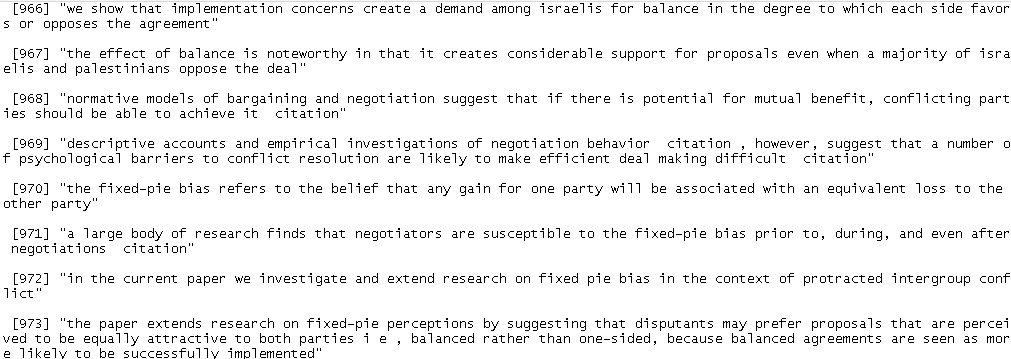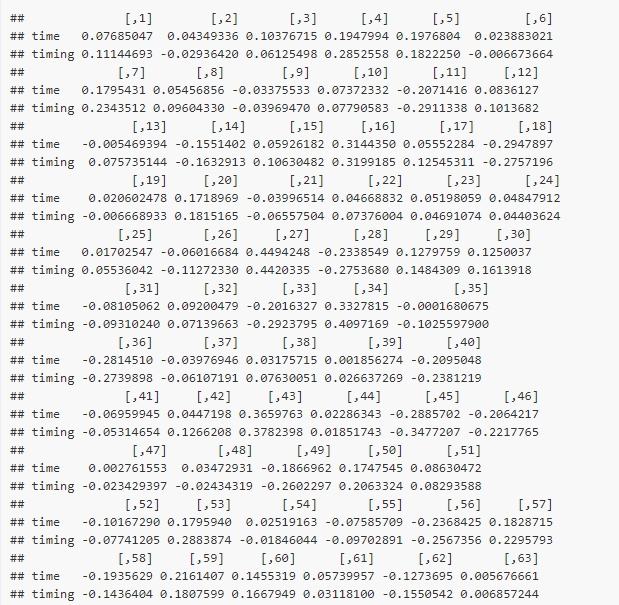FastText是Facebook开发的一款快速文本分类器,提供简单而高效的文本分类和表征学习的方法,不过这个项目其实是有两部分组成的。理论介绍可见博客:NLP︱高级词向量表达(二)——FastText(简述、学习笔记)
本轮新更新的fastrtext,同样继承了两个功能:训练词向量 + 文本分类模型训练
来源:
https://github.com/pommedeterresautee/fastrtext
相关文档地址:
https://pommedeterresautee.github.io/fastrtext/index.html
相关博客:
- 重磅︱文本挖掘深度学习之word2vec的R语言实现
- 重磅︱R+NLP:text2vec包——New 文本分析生态系统 No.1(一,简介)
其中text2vec包中有词向量Glove的运算。
.
一、安装
1.安装
# From Cran
install.packages("fastrtext")
# From Github
# install.packages("devtools")
devtools::install_github("pommedeterresautee/fastrtext")
.
2.主函数介绍
The following arguments are mandatory:
-input training file path
-output output file path
The following arguments are optional:
-verbose verbosity level [2]
The following arguments for the dictionary are optional:
-minCount minimal number of word occurences [5]
-minCountLabel minimal number of label occurences [0]
-wordNgrams max length of word ngram [1]
-bucket number of buckets [2000000]
-minn min length of char ngram [3]
-maxn max length of char ngram [6]
-t sampling threshold [0.0001]
-label labels prefix [__label__]
The following arguments for training are optional:
-lr learning rate [0.05]
-lrUpdateRate change the rate of updates for the learning rate [100]
-dim size of word vectors [100]
-ws size of the context window [5]
-epoch number of epochs [5]
-neg number of negatives sampled [5]
-loss loss function {ns, hs, softmax} [ns]
-thread number of threads [12]
-pretrainedVectors pretrained word vectors for supervised learning []
-saveOutput whether output params should be saved [0]
The following arguments for quantization are optional:
-cutoff number of words and ngrams to retain [0]
-retrain finetune embeddings if a cutoff is applied [0]
-qnorm quantizing the norm separately [0]
-qout quantizing the classifier [0]
-dsub size of each sub-vector [2]
也就是execute()时候,可以输入的函数是啥。
-dim,向量长度,默认100维;
-wordNgrams,词类型,一般可以选择2,二元组
-verbose,输出信息的详细程度,0-2,不同层次的详细程度(0代表啥也不显示)。
-lr:学习速率[0.1]
-lrUpdateRate:更改学习率的更新速率[100]
-dim :字向量大小[100]
-ws:上下文窗口的大小[5]
-epoch:循环数[5]
-neg:抽样数量[5]
-loss:损失函数 {ns,hs,softmax} [ns]
-thread:线程数[12]
-pretrainedVectors:用于监督学习的预培训字向量
-saveOutput:输出参数是否应该保存[0]
.
二、官方案例一 —— 文本分类模型训练
2.1 加载数据并训练
library(fastrtext)
data("train_sentences")
data("test_sentences")
# prepare data
tmp_file_model <- tempfile()
train_labels <- paste0("__label__", train_sentences[,"class.text"])
train_texts <- tolower(train_sentences[,"text"])
train_to_write <- paste(train_labels, train_texts)
train_tmp_file_txt <- tempfile()
writeLines(text = train_to_write, con = train_tmp_file_txt)
test_labels <- paste0("__label__", test_sentences[,"class.text"])
test_texts <- tolower(test_sentences[,"text"])
test_to_write <- paste(test_labels, test_texts)
# learn model
execute(commands = c("supervised", "-input", train_tmp_file_txt, "-output", tmp_file_model, "-dim", 20, "-lr", 1, "-epoch", 20, "-wordNgrams", 2, "-verbose", 1))
其中可以看到与之前熟知的机器学习相关模型不同,其模型运行是通过execute来得到,并保存。
其中:
来看看输入数据长啥样子:

数据是char格式的,之前__label__XXX 是该文本的标签,然后空格接上文本内容。
运行结果:
##
Read 0M words
## Number of words: 5060
## Number of labels: 15
##
Progress: 100.0% words/sec/thread: 1457520 lr: 0.000000 loss: 0.300770 eta: 0h0m
.
2.2 验证集+运行模型
# load model
model <- load_model(tmp_file_model)
# prediction are returned as a list with words and probabilities
predictions <- predict(model, sentences = test_to_write)
load_model模型文件位置,test_to_write是验证文本,长这样(其实跟训练集长一样):

显示:
print(head(predictions, 5))
## [[1]]
## __label__OWNX
## 0.9980469
##
## [[2]]
## __label__MISC
## 0.9863281
##
## [[3]]
## __label__MISC
## 0.9921875
##
## [[4]]
## __label__OWNX
## 0.9082031
##
## [[5]]
## __label__AIMX
## 0.984375
.
2.3 模型验证
计算准确率
# Compute accuracy
mean(sapply(predictions, names) == test_labels)
计算海明距离
# because there is only one category by observation, hamming loss will be the same
get_hamming_loss(as.list(test_labels), predictions)
## [1] 0.8316667
.
2.4 一些小函数
查看监督模型的label有哪些,get_labels函数。
如果已经训练好模型,放了一段时间,又不知道里面有哪些标签,可以这么找一下。
model <- load_model(model_test_path)
print(head(get_labels(model), 5))
#> [1] "__label__MISC" "__label__OWNX" "__label__AIMX" "__label__CONT"
#> [5] "__label__BASE"
查看模型的参数都用了啥get_parameters:
model <- load_model(model_test_path)
print(head(get_parameters(model), 5))
#> $learning_rate
#> [1] 0.05
#>
#> $learning_rate_update
#> [1] 100
#>
#> $dim
#> [1] 20
#>
#> $context_window_size
#> [1] 5
#>
#> $epoch
#> [1] 20
#>
.
三、官方案例二 —— 计算词向量
3.1 加载数据 + 训练
library(fastrtext)
data("train_sentences")
data("test_sentences")
texts <- tolower(train_sentences[,"text"])
tmp_file_txt <- tempfile()
tmp_file_model <- tempfile()
writeLines(text = texts, con = tmp_file_txt)
execute(commands = c("skipgram", "-input", tmp_file_txt, "-output", tmp_file_model, "-verbose", 1))
commands 里面的参数是:“skipgram”,也就是计算词向量,跟word2vec一致。
输入的文本内容,不用带标签信息:

.
3.2 词向量
model <- load_model(tmp_file_model)
加载词向量的文件,加载的是bin文件
# test word extraction
dict <- get_dictionary(model)
print(head(dict, 5))
## [1] "the" "</s>" "of" "to" "and"
dict 就是词向量的字典,
# print vector
print(get_word_vectors(model, c("time", "timing")))
显示一下,词向量的维度。

.
3.3 计算词向量距离——get_word_distance
# test word distance
get_word_distance(model, "time", "timing")
## [,1]
## [1,] 0.02767485
.
3.4 找出最近邻词——get_nn
get_nn参数只有三个,最后数字代表选择前多少个近义词。
library(fastrtext)
model_test_path <- system.file("extdata", "model_unsupervised_test.bin", package = "fastrtext")
model <- load_model(model_test_path)
get_nn(model, "time", 10)
#> times size indicate access success allowing feelings
#> 0.6120564 0.5041215 0.4941387 0.4777856 0.4719051 0.4696053 0.4652924
#> dictator amino accuracies
#> 0.4595046 0.4582702 0.4535145
.
3.5 词的类比——get_analogies
library(fastrtext)
model_test_path <- system.file("extdata", "model_unsupervised_test.bin", package = "fastrtext")
model <- load_model(model_test_path)
get_analogies(model, "experience", "experiences", "result")
#> results
#> 0.726607
类比关系式:
get_analogies(model, w1, w2, w3, k = 1)
w1 - w2 + w3
也即是:
experience - experiences + result











 本文介绍了如何在R语言中使用fastrtext进行文本分类和词向量计算。首先讲解了fastrtext的安装与主函数,接着通过官方示例展示文本分类模型的训练过程,包括数据加载、模型验证和参数调优。随后,详细阐述了词向量的计算,如获取词向量距离、寻找最邻近词和进行词的类比分析。
本文介绍了如何在R语言中使用fastrtext进行文本分类和词向量计算。首先讲解了fastrtext的安装与主函数,接着通过官方示例展示文本分类模型的训练过程,包括数据加载、模型验证和参数调优。随后,详细阐述了词向量的计算,如获取词向量距离、寻找最邻近词和进行词的类比分析。

















 477
477

 被折叠的 条评论
为什么被折叠?
被折叠的 条评论
为什么被折叠?










